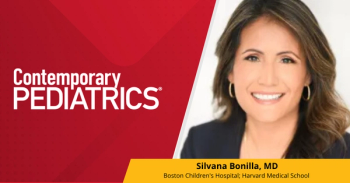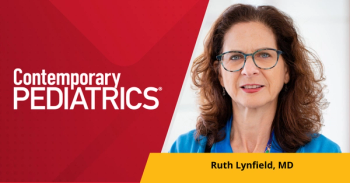
How to spot brain and skin spots, and how to manage them
When is a spot not just a spot? Children can sprout a variety of discolorations, and it takes a trained eye to know when to investigate further.
When is a spot not just a spot? Children can sprout a variety of discolorations, and it takes a trained eye to know when to investigate further.
In their discussion “Skin spots and brain spots: Neurocutaneous disorders” at the American Academy of Pediatrics (AAP) 2017 National Conference and Exhibition on September 18, Paul Graham Fisher, MD, FAAP, professor of Neurology, Pediatrics, Neurosurgery, and Human Biology at Stanford University, Stanford, California, and Susy Jeng, MD, FAAP, clinical assistant professor of Neurology and Neurological Sciences at Stanford University, reviewed the hallmarks of various neurocutaneous disorders, as well as how to diagnose and manage them in practice.
“Anything on the skin-a rash or a spot-those are common in pediatrics,” Fisher says. “One of the purposes of this session is to alert pediatricians to those disorders where there are spots on the skin that could signal a neurocutaneous disorder.”
Many pediatricians might say, “Oh, I don’t see much of that in my practice,” Fisher notes. “The thing is, you do, but you may not recognize the disorder,” he says.
Neurofibromatosis type 1 (NF1) is one of the most common neurocutaneous disorders, Fisher says. It runs in families and can often show up out of the blue. It doesn’t just affect the skin and the brain, either. There are many manifestations, and it often gets missed, he says.
Another commonly missed disorder is PHACES syndrome-posterior fossa brain malformations, hemangiomas of the face, arterial anomalies, cardiac anomalies, and eye abnormalities. Whereas hemangiomas often regress, in PHACES, Fisher says, “It’s one of those things you never want anyone to miss. It’s a newer neurocutaneous syndrome that not many pediatricians are really aware of,” he says. “The word needs to get out about PHACES.”
In this disorder, hemangiomas are often located around the face, lips, and mouth. Still, it’s difficult to diagnose, but it can be confirmed by ultrasound first and then magnetic resonance imaging (MRI).
“You would like to think there is genetic testing, but genetic testing sensitivity is still poor, and it’s mostly going to be through good old-fashioned recognition that these things are diagnosed than through genetic testing,” Fisher says. “You have to be able to know it when you see it.”
Jeng says pediatricians should make it a practice to always ask about and look for birthmarks and question a diagnosis of cerebral palsy. Consult an ear, nose, and throat specialist for neonates with large facial hemangiomas, and know when genetic testing is available and for which disorders.
In more detail, Fisher and Jeng detailed several key disorders:
• Neurofibromatosis type 1 (NF1): Includes 2 or more of the following manifestations-6 or more café au lait spots measuring 5 mm or more in prepubescent children; axillary or inguinal freckling; 1 plexiform neurofibroma or 2 neurofibromas; optic nerve or chiasmatic glioma; 2 or more Lisch nodules (asymptomatic melanocytic hamartoma of the iris); long bone cortex thinning, with or without pseudarthrosis; sphenoid dysplasia; and/or a first-degree relative with NF1. Other possible features include megalencephaly/macrocephaly at birth, short stature, bony deformities, renal problems, developmental delays or behavioral problems, and some cancers. Genetic testing is available, but it is not particularly useful for diagnosis or management. Management includes ophthalmologic testing every year to age 6 years, and monitoring for additional complications such as scoliosis, hypertension, and speech problems.
• Neurofibromatosis type 2 (NF2): Involves bilateral cranial nerve VIII schwannomas or unilateral cranial nerve VIII schwannoma and a first-degree relative with NF2; or 2 of the following symptoms and a first-degree relative with NF2-cutaneous neurofibroma, meningioma, glioma, schwannoma, and presenile posterior cataract. Patients with NF2 may also have café au lait spots, but to a lesser extent than with NF1. Genetic testing is available and is helpful in explaining signs and symptoms of this disease in young children. Management techniques include audiology, brain imaging before adolescence, surgery, and bevacizumab, an angiogenesis inhibitor.
• Tuberous sclerosis complex: Characterized by 2 or more of various symptoms such as 3 or more hypomelanotic macules; 3 or more angiofibroma or fibrous cephalic plaques; 2 or more ungula fibroma; Shagreen patch; multiple retinal hamartomas; cortical dysplasias; subependymal nodules; subependymal giant cell astrocytoma; cardiac rhabdomyoma; lymphangioleiomyomatosis; angiomyolipomas; confetti skin lesions; dental enamel pits; intraoral fibromas; retinal achromatic patches; multiple renal cysts; and nonernal hamartomas. Genetic testing may be helpful for management because of the availability of specific treatment options such as vigabatrin, everolimus, and surgery. Surveillance methods can include MRIs of the brain and kidney, echocardiograms, electroencephalograms (EEGs), respiratory testing, annual ophthalmology exams, annual skin examinations, and dental exams every 6 months.
• Sturge-Weber syndrome: Characterized by a facial port-wine stain and leptomeningeal angiomatosis. Other symptoms include intellectual disability, seizures, migraines, and strokes or stroke-like episodes. The benefit of genetic testing and management techniques include MRI of the brain after age 1 year for accurate diagnosis, aspiring for stroke risk, close ophthalmology screening, EEG to detect subclinical seizures, and testing for pituitary and thyroid complications.
• Ataxia telangiectasia: Includes progressive ataxia and choreoathetosis; oculomotor findings such as apraxia, slow saccades, square-wave jerks; oculocutaneous telangiectasiae (lateral rather than inferior); thymic hypoplasia and diminished immunoglobulin (Ig)-G, 2, 4; IgA; IgE; proclivity to sinopulmonary infections; chronic lung disease; leukemia, lymphoma and other neoplasms; and premature aging of the hair and skin. Genetic testing is recommended as preventive measures can be taken because of the variability in the presentation and timeframe of symptoms.
• PHACES syndrome: Involves posterior fossa anomalies, hemangiomas (usually a large one on the head or neck), arterial/aortic anomalies, coarctation of aorta/cardiac defects, eye abnormalities, sternal defects and supraumbilical raphe, hypothyroidism, hypopituitarism, hearing loss, and dental problems. Occurrence is sporadic and there is no evidence of genetic or familial incidence. Management is done through imaging of the head and neck; stroke risk stratification; aspirin for high-risk patients; evaluation for posterior fossa abnormalities; vasoconstrictive medications for headache treatment; oral propranolol for hemangiomas; eye and audiology exams; echocardiogram, speech and swallow evaluations; and a close watch on growth trajectories.
Newsletter
Access practical, evidence-based guidance to support better care for our youngest patients. Join our email list for the latest clinical updates.














